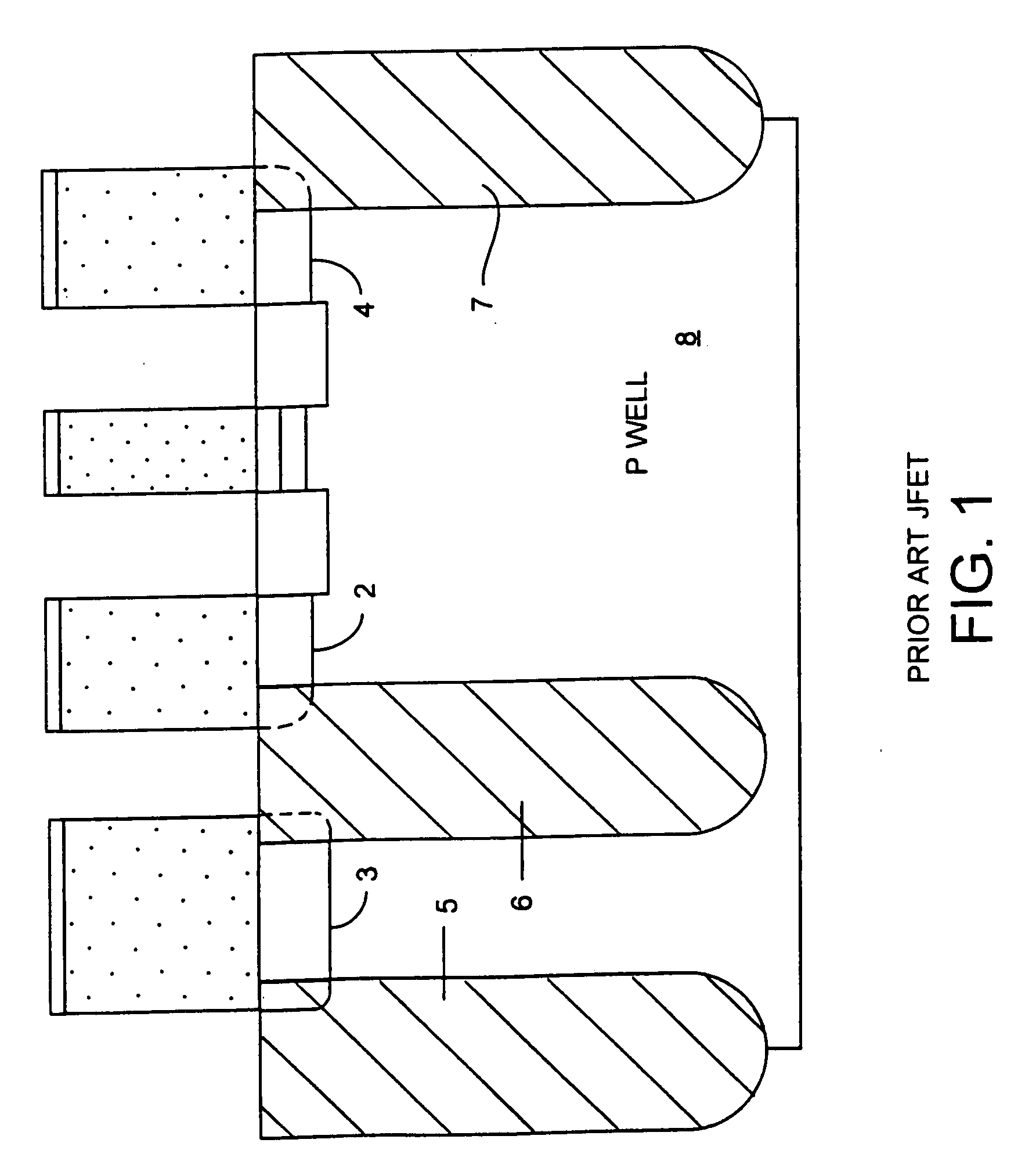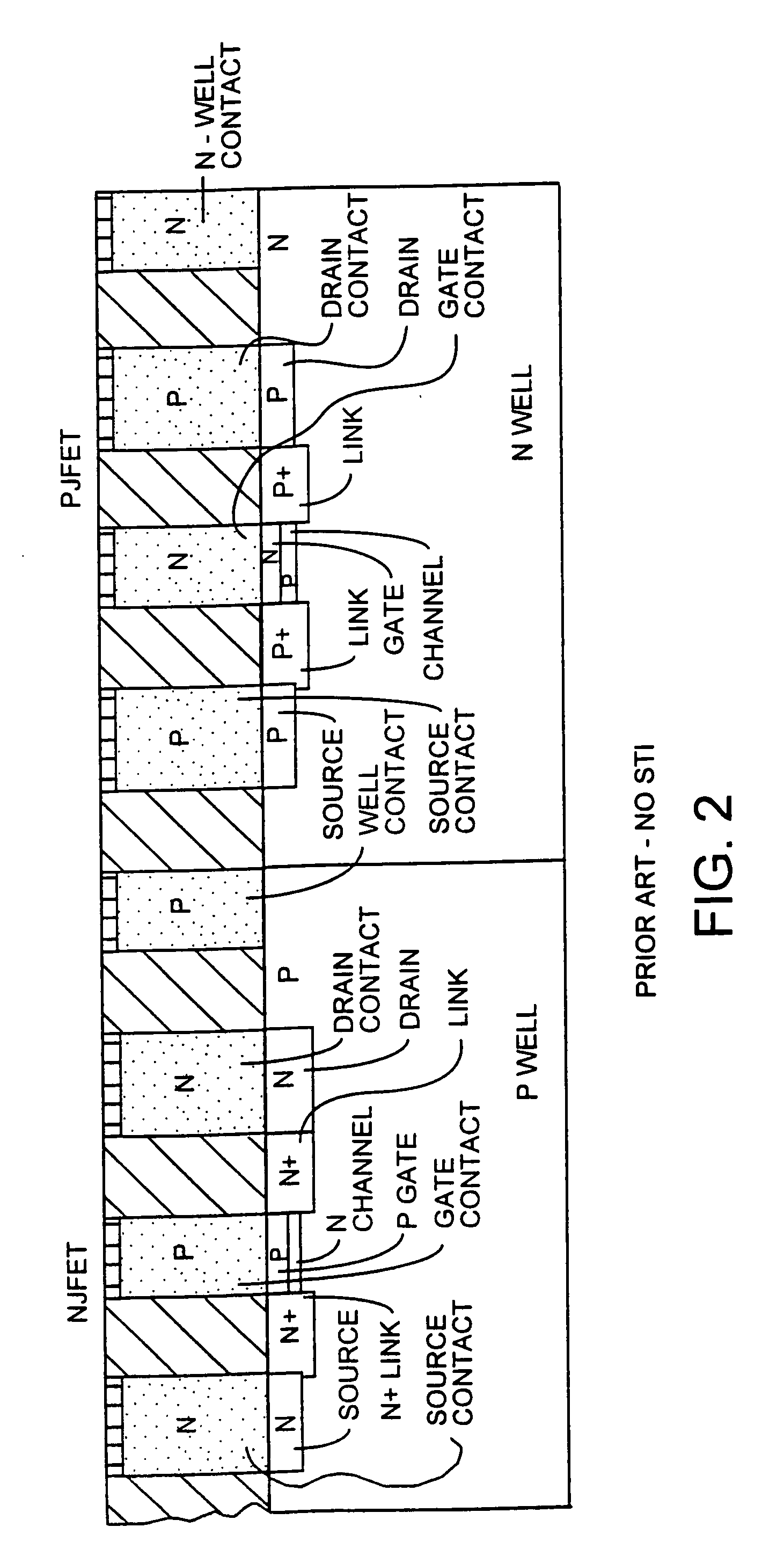Junction isolated poly-silicon gate JFET
a polysilicon gate and junction isolation technology, applied in the field of junction isolation polysilicon gate jfet, can solve problems such as inoperative rendering
- Summary
- Abstract
- Description
- Claims
- Application Information
AI Technical Summary
Benefits of technology
Problems solved by technology
Method used
Image
Examples
embodiment
Preferred Embodiment
[0036]FIG. 8 is comprised of FIGS. 8A through 8D, and shows the details of the finished device. FIG. 8A is a cross-section through the finished device active area, less contact holes and metallization, and is section AA′ in FIG. 8D. FIG. 8B is a cross-section through the finished device at the gate (section BB′ in FIG. 8D). FIG. 8C is a cross-section through the finished device at the source (Section CC′ in FIG. 8D). FIG. 8D is a top view of the finished device looking down on the active area (silicide on top of the poly-silicon contacts is not shown). The finished device structure will be discussed with reference to all of FIGS. 8A through 8D. Dashed line 10 in FIG. 8D is the outline of the active area. A region of P+ doped poly-silicon 12 is the gate contact. The gate contact poly-silicon has silicide 14 formed on top thereof to reduce its resistance and to short out any PN junctions which are inadvertently formed if the gate poly-silicon 12 is extended to make...
PUM
 Login to View More
Login to View More Abstract
Description
Claims
Application Information
 Login to View More
Login to View More - R&D
- Intellectual Property
- Life Sciences
- Materials
- Tech Scout
- Unparalleled Data Quality
- Higher Quality Content
- 60% Fewer Hallucinations
Browse by: Latest US Patents, China's latest patents, Technical Efficacy Thesaurus, Application Domain, Technology Topic, Popular Technical Reports.
© 2025 PatSnap. All rights reserved.Legal|Privacy policy|Modern Slavery Act Transparency Statement|Sitemap|About US| Contact US: help@patsnap.com



